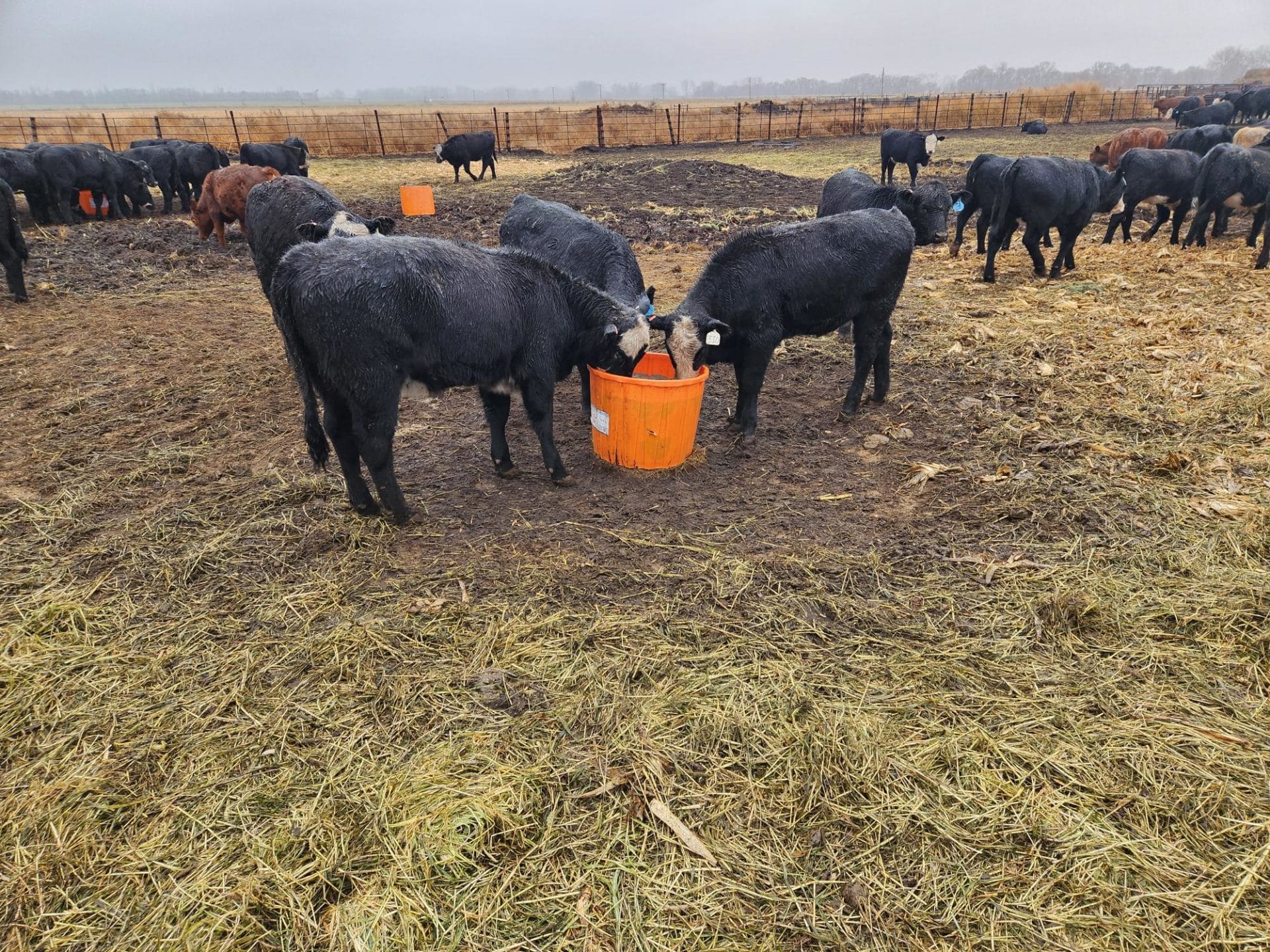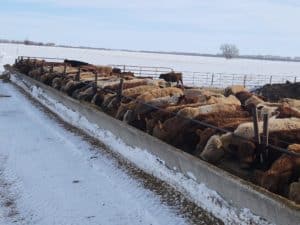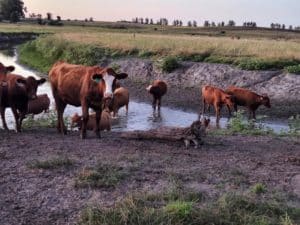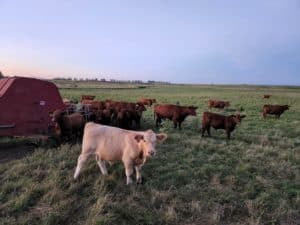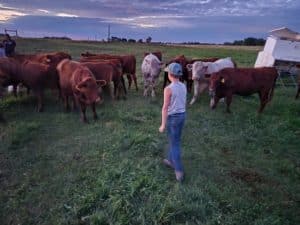Last updated on September 22nd, 2023 at 11:15 am
Feed Efficiency Starts From the Ground Up
Want to drive up efficiency? Just look down.
MEET Dustin Heitkamp

Wyndmere, North Dakota
Want to know if your cows are getting enough protein? Just look down, says Dustin Heitkamp, a cow-calf producer from Wyndmere, North Dakota. “The one thing I think you should do is watch your manure. It tells you a lot,” he says.
He hasn’t always done that, but with feed costs skyrocketing, the need to ensure cows are getting adequate nutrition through the winter is paramount. “When you get them on a lot of dry feed or not enough protein, your manure starts to stack more,” he says. If your cows are on an adequate plane of nutrition, the manure will lie flat. “Pancake batter, they call it,” he says, “with a little bit of a dimple in it.”
Checking the manure is important to the third-generation beef producer and farmer because Heitkamp Farms, like an awful lot of beef operations, winters their 650-head cow herd on some mighty low-quality feed. “Just making sure, watching that manure and making sure we’re getting the right feed into them and the cows are able to stretch it.”
Earning a Good Reputation
Dustin’s grandfather and a partner started the operation in 1960, just as European beef genetics came ashore from across the pond. The first breed to come into the U.S. were Charolais. His grandfather was an early adopter and is credited with bringing the genetics into their area of southeast North Dakota. While many beef producers have shifted to Angus genetics over time, the Heitkamps maintain their roots in European breeds.
“We have a Charolais-Simmental cross and go for a buckskin calf,” he says. “Our red Simmental cows are bred Charolais and our Charolais cross cows are bred red Simmental.” They calve in February and March, cold months that far north, but need to get calves up and around before spring field work starts. In addition to the cowherd, they also farm around 3,500 acres, mainly a corn and soybean rotation.
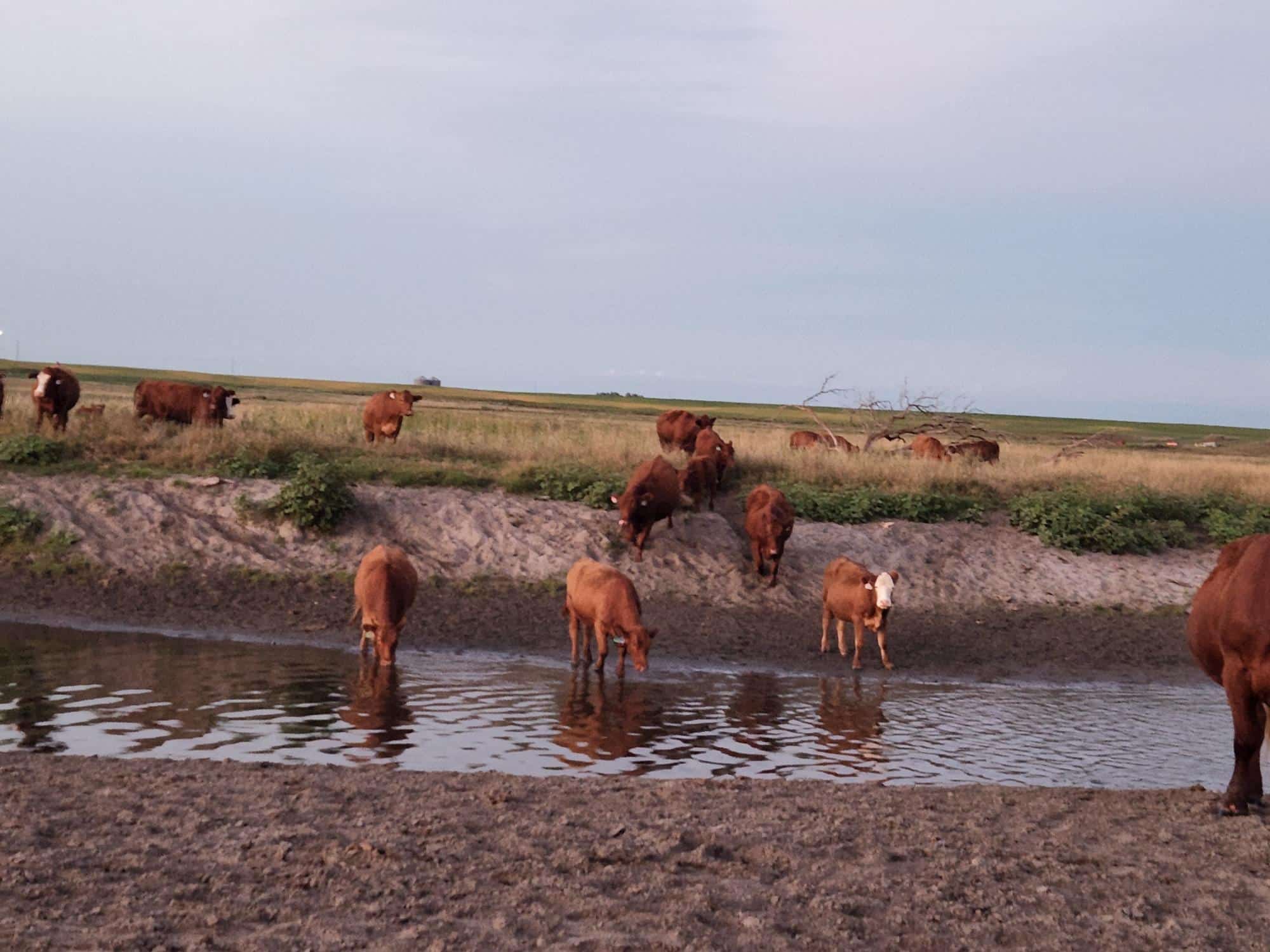
Calves are weaned in September and October and go into the Heitkamp’s feedlot for backgrounding. The ration is a TMR mix of ground hay and corn silage. Once the calves hit 900 to 950 pounds, they’re sold at a local livestock auction starting in January each year.
The Heitkamp calves have developed a reputation over time and feedlot buyers seek them out, he says. “We try to do everything right,” he says. “A lot of the feeders really like them.”

Selling reputation cattle is important to Heitkamp for two reasons. One, of course, is the reputation the Heitkamp name carries when their calves walk into the ring. The other is that the Heitkamps buy calves to background along with those they raise.
“You get a group of calves in that you’re not familiar with the name. If they work, you’re going to come back next year. If they don’t work or you have issues with them, you’re not as likely to come back.”
That’s where your mineral and vitamin supplement program comes in, he says. “With tight margins, cutting costs in the right areas has been more of an issue than a guy would think. Cutting on your vaccination program, I don’t think that’s the right area.”
Ditto for nutrition. “Your mineral programs and health programs are your biggest areas that I don’t feel you should cut.” To that end, he started using Riomax® tubs in 2021. With the results he’s seen, he’s not looking back.
Stretching Feed to Save Money
That’s because, in this era of high prices and tight margins, he says Riomax® saves money. “If we’re cutting our health and mineral program, there’s nothing to replace it,” he says. “If you can go with this mineral program and get your feed savings and pasture savings and cut corners that way, you’re saving money with the feed savings and you’re not taking anything away from your cattle.”
Here’s how that works. The unique formulation of a 19-component digestion package containing yeast, enzymes, probiotics, and other ingredients in the Riomax® tubs increases the digestive efficiency of the cattle. “The main thing I would say is it is stretching poor quality feeds. We’re feeding straw, corn stalks, slough hay, trying to spice it up a little with distillers.”
With the Charolais-Simmental cross, his cows are a little bigger than average. “We seem like we’re around 30 to 32 pounds of dry matter” per day per cow for a winter ration. “We’ve been able to drop it back probably about 10 to 15 percent.”
Considering that their grass season begins around May 20 and the cows come home the end of October, that’s a long feeding period. “We’ll graze cornstalks or cover crops, stuff like that, as long as we can, and then we’re onto hay and TMR mix for the rest of the winter on our cows.” Realizing a 15 percent savings on feed for that length of time is significant.
Then there’s stretching pastures. Heitkamp tells of two groups of replacement heifers on droughty pasture in 2022. “We knew we wouldn’t have enough grass for the whole season, so we knew we were going to have to move them or feed them,” he says.
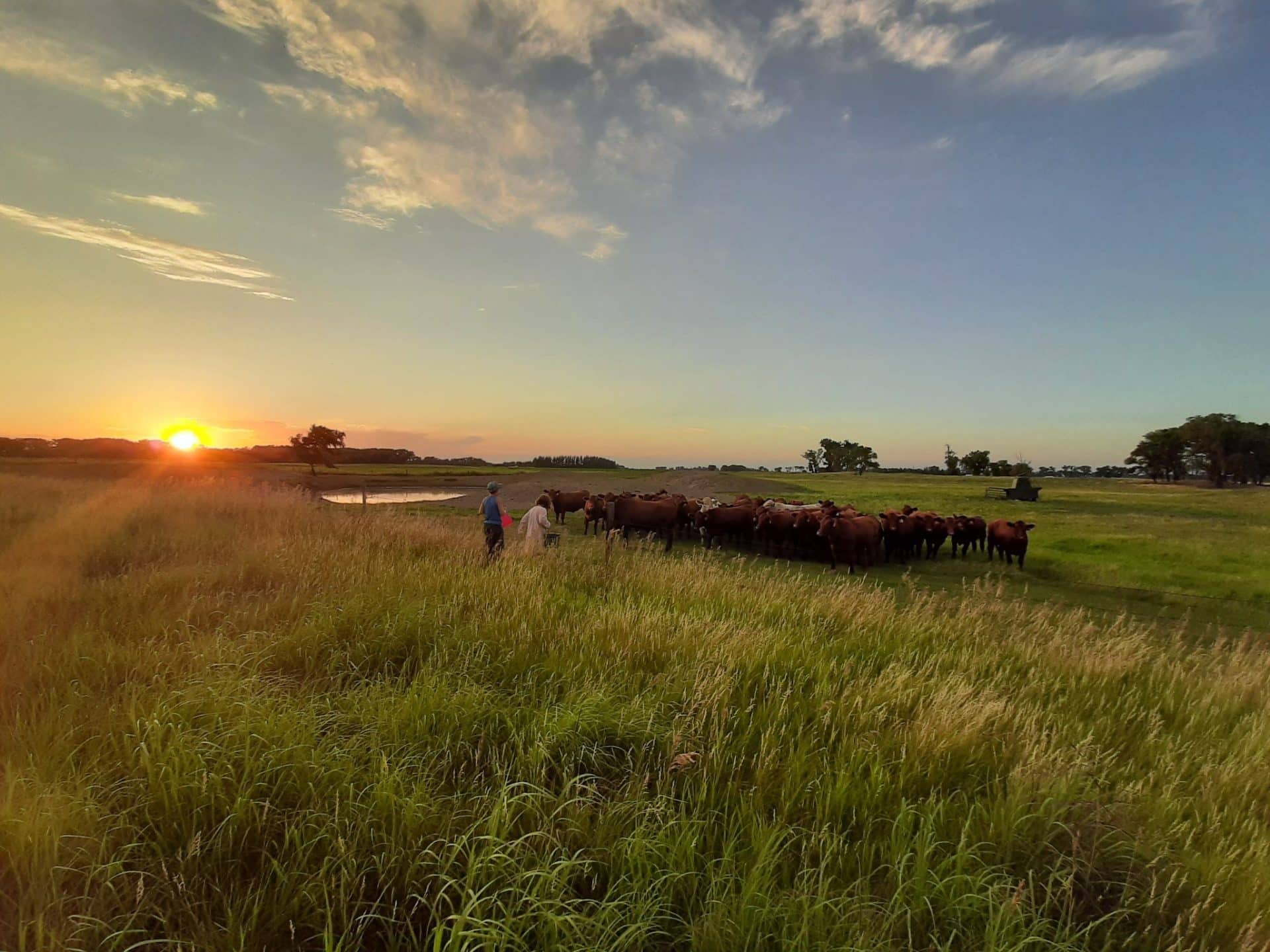
However, with the orange tubs available free choice, “they held in there for a long, long time. I was just surprised at how much they utilized that grass and were content,” he says. “We were going to be short on grass and they lasted a lot longer than I ever expected.”
He saw the same thing with the cows. Historically, they’ve run a cow per four to five acres during the five-month grazing season. “I think that came down pretty good and I think it will continue to do that.”
Calf Health Starts with the Cow
Beyond that, he’s seen an increase in calf health and calf vigor during calving season. Calving early puts the calf hitting the ground during unpredictable weather, other than the cold. That’s the one thing he can count on.
“That (calf vigor) was one of the first things I noticed,” he says, after starting his cows on Riomax®. “Calving in February with the cold, the calves were hitting the ground and bouncing right up and getting under there and getting their colostrum. That was really good to see.”
He says that starts with the cow. “Getting (Riomax®) into the cow, getting it into the colostrum, passing it on to the calf. It’s your starting point for the whole year and that’s one of the nicest things that we saw right away is we didn’t have any dumpy calves laying around. They’d get up and suck. We didn’t have to put near as many in the chute, which saves a lot of time.”
He’s seen fewer health problems in the calf crop, resulting in fewer treats. And even the calves that require a little extra TLC respond faster. “That’s been really nice to see,” he says, “that you can treat them, get them to bounce back and back on their feet and gaining.”
Heitkamp admits the upfront price can give you sticker shock. “But after you sit down and start seeing the results and figuring out your returns, it’s so much easier to absorb,” he says. “Yeah, it’s still a monthly bill, but at the end of the day if you’re saving something somewhere else, it pays.”
